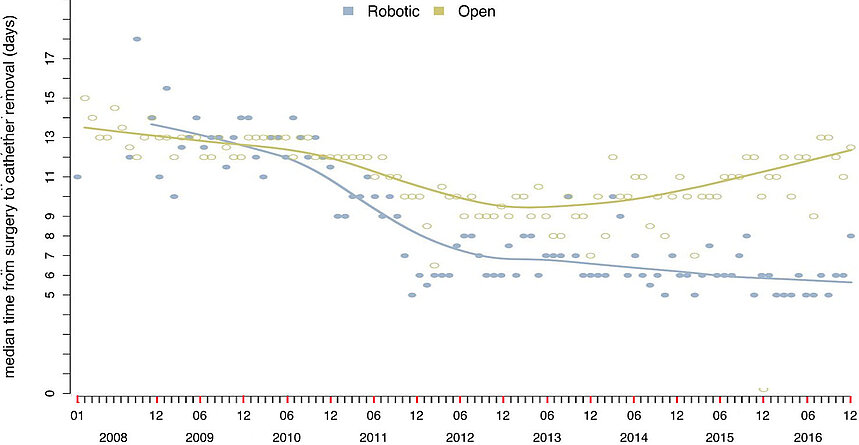Summary
At the Martini-Klinik, we rely on both surgical methods. As a rule, surgeons with the best possible training and experience are more likely to achieve successful outcomes in terms of preserving continence and potency. But which surgical method is right for you? In an initial consultation with you, your surgeon will examine whether there are medical criteria in favour of either method (such as the tumour stage, your physical constitution, any comorbidities, your age, etc.). As ever, we will ensure you have all the information you need to make your own decision.
You can choose elective services that are not medically necessary, such as the use of a robotic-assisted surgical system, regardless of your insurance status. We charge for such services separately; this co-payment will not be reimbursed by your health insurance provider.



